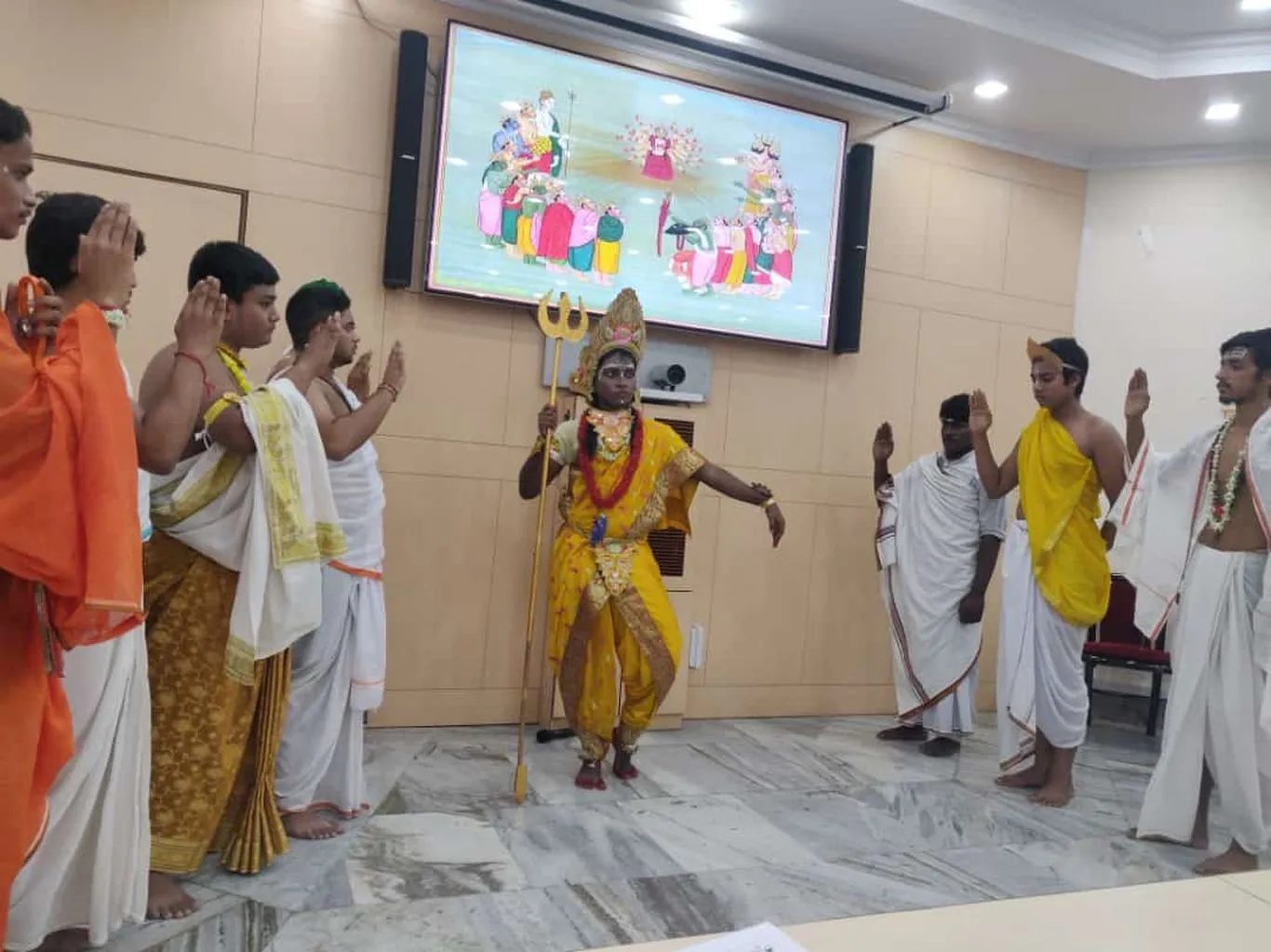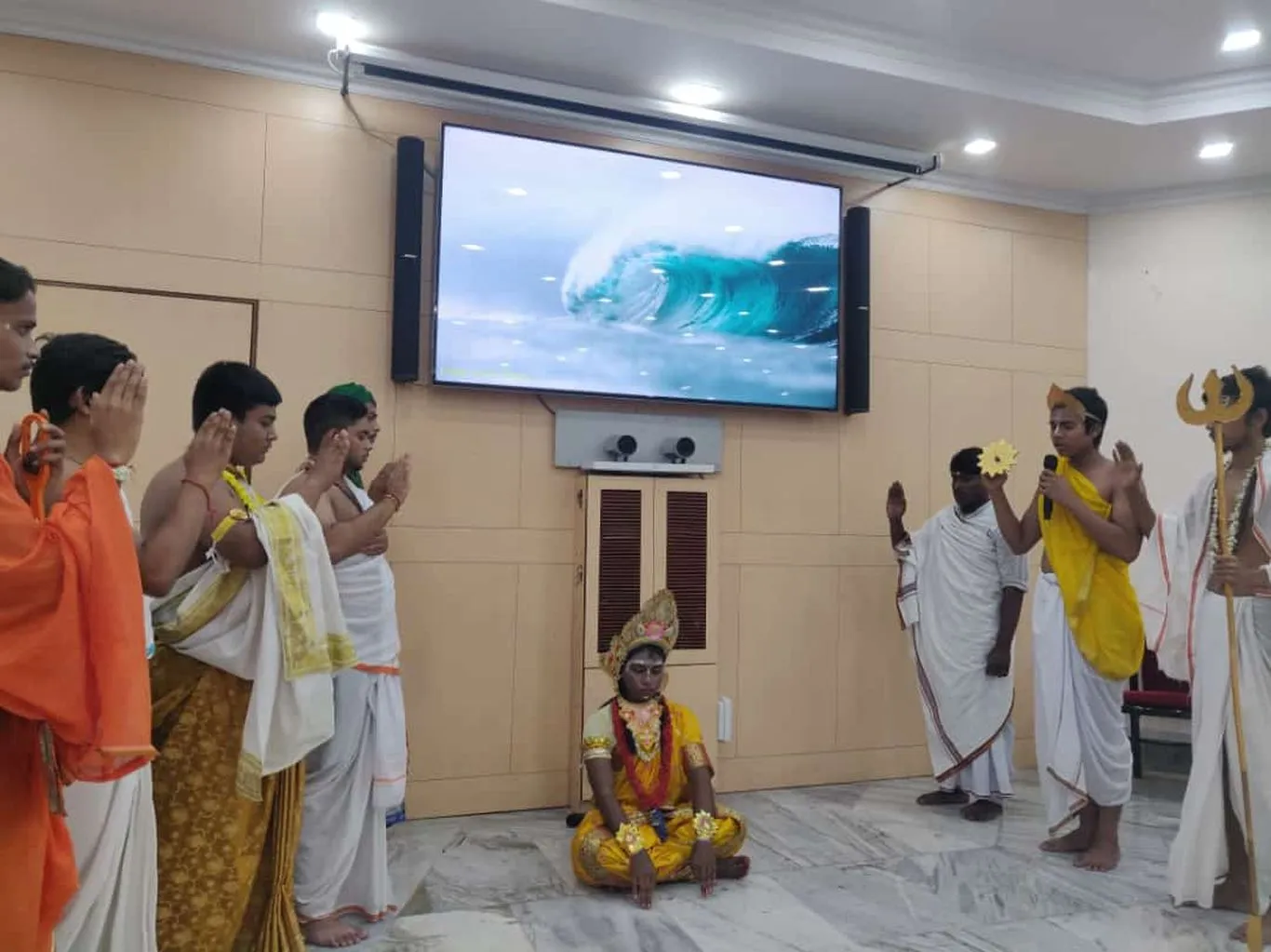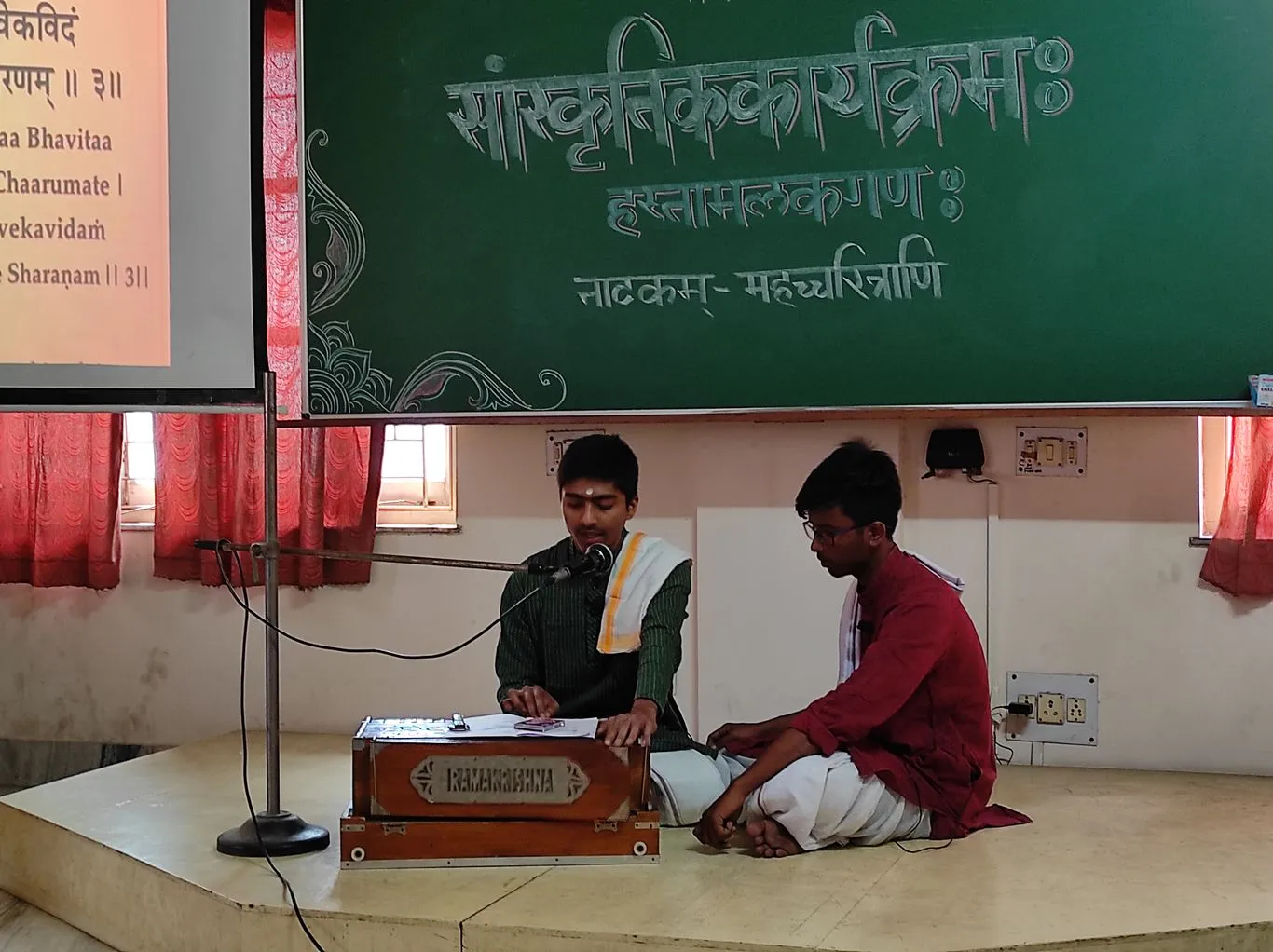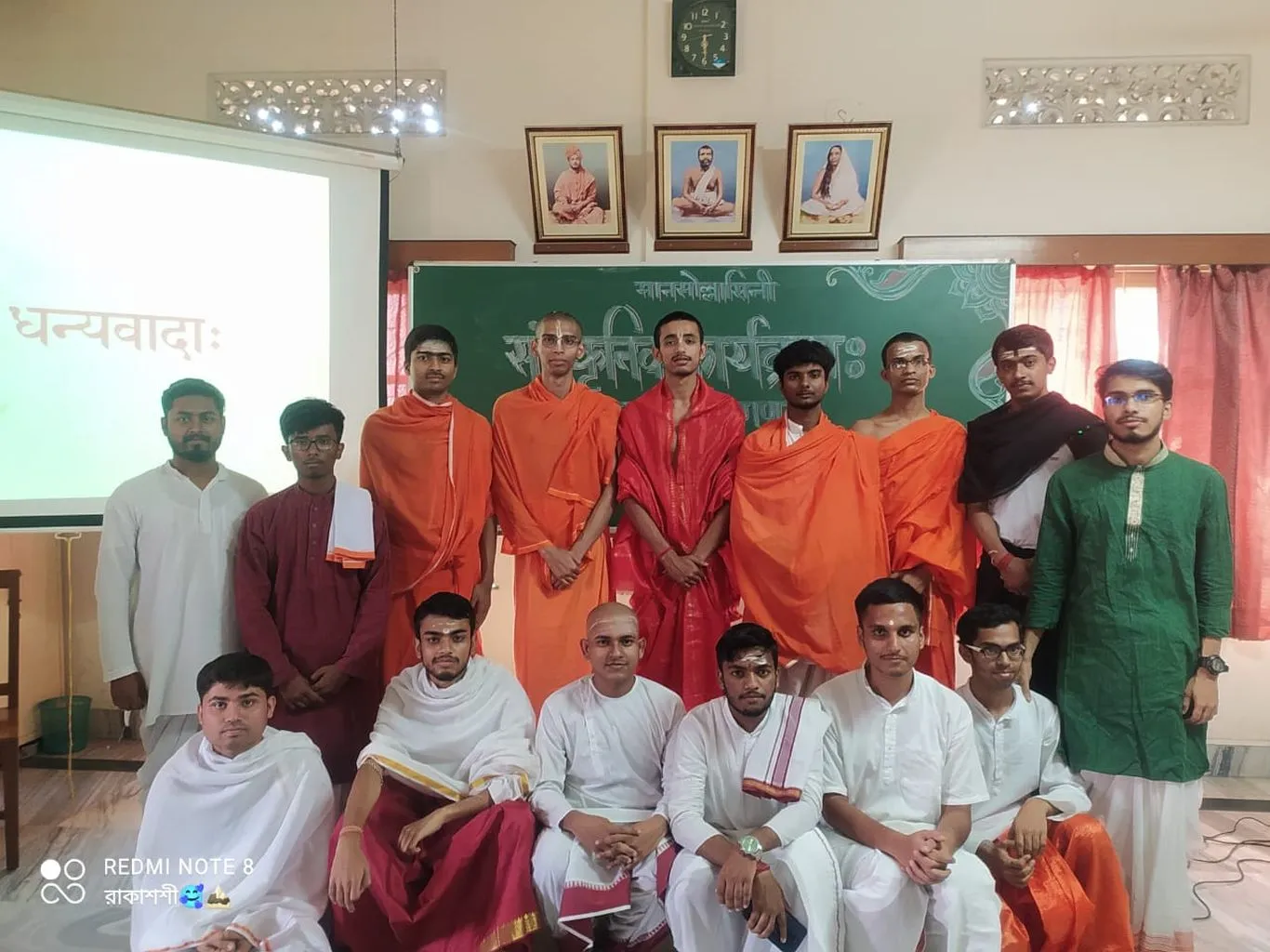This is formulated as a platform for the students of Sanskrit to develop their language skills. And it literally means “An assembly or a forum that entertains and encourages the mind.”
Objectives
Mānasollāsinī Parishat literally means ’An assembly or a forum that entertains and encourages the mind’. The main objectives of the Mānasollāsinī Parishat, in short Mānasollāsinī, are both subject-centered and student-centered. Subject-centered because we focus on reviving the Sanskrit language and traditions through Mānasollāsinī. And it is student-centered or learner-centered because by actively participating in the Mānasollāsinī and thus continuously using and experimenting with different Sanskrit knowledge traditions, students become great experts in the field. Mānasollāsinī encourages the students to feel comfortable in Sanskrit and thus enliven the Sanskrit language and traditions.
The Context
There are flaw in the usual method of teaching Sanskrit at the University level. Sanskrit teaching is treated as a stagnant tradition of the past. This method is tolerable, but not for those who want Sanskrit to flouish and perpetuate age old culture, values and traditions. Therefore correcting this flaw meant providing frequent opportunities to the Sanskrit learners, outside the classroom, an informal setup, to use and practice and be creative in Sanskrit language.
In our society, Sanskrit is not a language heard spoken very often. Apart from the high veneration offered to it, its classical prose form is not much understood and used, unlike other Indian languages. So the institute has to create an atmosphere where Sanskrit is put to use.
Mānasollāsinī fulfills this purpose.
The Practice
This best practice of the Department is basically a students’ forum, managed and organised by the senior students with the guidance of the faculty. Some of the programs they conduct are based on the curriculum they study, and some other programs are outside their curriculum but within the Sanskrit field or even pertaining to current affairs. The Mānasollāsinī Parishat is structured as ganās and gananāyakās, sanchālakās and Parishat-sadasyās, nirnayakās and upadeshtā, all the prominent positions being occupied by the students.
The year-long activities of the Mānasollāsinī Parishat are charted week wise and student wise- individual and in groups. Parishat convenes the Sāptāhika-samāroha the weekend session.
Coming to the Activities of the Mānasollāsinī Parishat – they are designed to meet the objectives of the Parishat. All activities have one thing specially in focus i.e. they should help the students in developing cognitive and creative skills in Sanskrit language. In order to be creative in Sanskrit, they have opportunity to compose poetry and recite them, and receive critical appreciation of the students and faculty. They can speak on different topics and debate on them. And perform traditional co-curricular practices such as Shalaka-pariksha, Vākyārtha, Vāda-kathā, Antyākshari, Samasyāpurti etc.
They even sutilise the Sanskrit Rupakās by revamping and performing them, as an effective means of enhancing academic excellence. When you prepare for a drama, you have to conceive an idea, give it a presentable form keeping all the constraints of the stage and expectations of the viewers, compose the dialogues, memorise them.
Evidence of Success
Mānasollāsinī boosted the confidence of our students with little knowledge of Sanskrit even in the first year of their study. In six months, they start speaking fluent Sanskrit. Write all the examinations entirely in Sanskrit. They take part in state and national level competitions subsequently.
They could present very outstanding performance in even traditional institutions that are home ground for Sanskrit erudition and scholarship, such as Shringeri Math, and won prestigious awards – to the best of our knowledge for the first time from West Bengal.
Mānasollāsinī helped the students to showcase their academic excellence even in the curriculum. Every year students in good number qualify in the National Eligibility Test (NET) with high percentage of marks and either pursue further research or become college teachers.
Problems encountered and resources required
Availability of qualified resource persons more so from traditional circles who can add value to this project is a perpetual shortcoming.
 |
 |
 |
 |